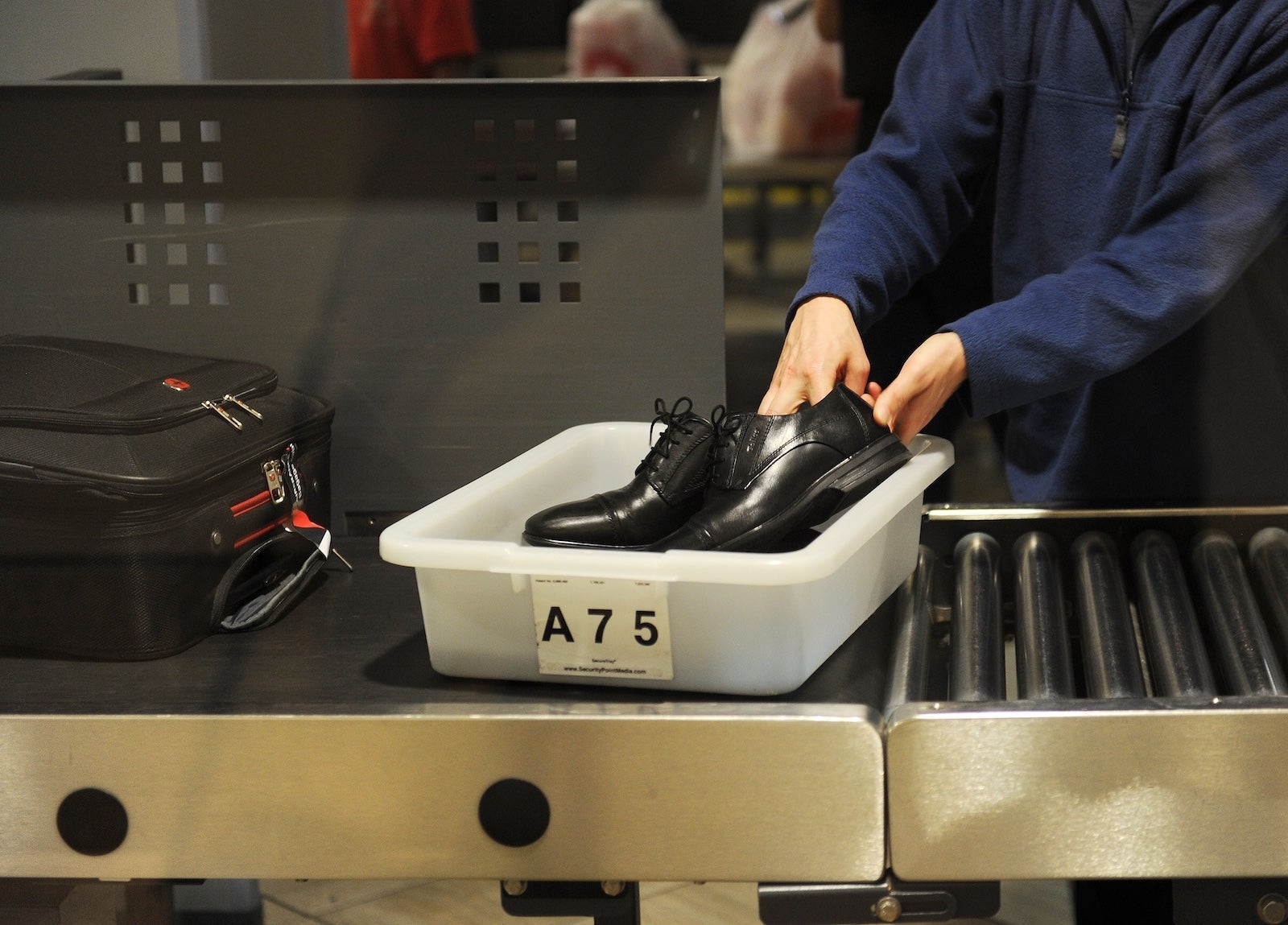It’s official: Travelers no longer have to remove shoes at TSA checkpoints
Quick summary
Farewell to the speculation, and one of the most frustrating parts of air travel for millions of passengers. The Transportation Security Administration on Tuesday officially ended its policy requiring most travelers to remove their shoes at checkpoints nationwide.
The change was effective immediately, wound down a policy that had been in place for nearly 19 years, and figured to streamline the security experience for travelers who don't have access to the fast-tracked TSA PreCheck lanes.
The official announcement came after something of a soft launch that saw passengers pass through checkpoints with shoes on early in the week, including a duo of major East Coast airports I visited earlier Tuesday.
"We want to improve the travel experience while maintaining safety standards," U.S. Secretary of Homeland Security Kristi Noem said Tuesday, announcing the policy shift in a news conference at Ronald Reagan Washington National Airport (DCA).
Read more: We went through security at airports across the country on Day 1 of Real ID: What you can expect
Ending a long-standing air travel headache
Removing shoes had been a staple of the flying experience for a generation — and one that few travelers looked forward to when arriving at airports.
The TSA first began requiring most passengers to remove their shoes for screening in August 2006 as a way to better screen for explosives. Concerns about the security threat of passenger footwear largely date back to a 2001 failed terror plot by Richard Reid, later dubbed the "shoe bomber."

Over the course of the last decade, millions of travelers enrolled in TSA PreCheck (or who got TSA PreCheck via Global Entry) gained the ability to keep their shoes on at security checkpoints — among the top time-saving benefits of the program.
But the shoes-off restriction remained a frustrating reality for passengers in the standard security lanes, still used by a majority of flyers.

Read more: 8 ways to get free or discounted TSA PreCheck, Global Entry and Clear
Why did the TSA stop requiring passengers to take their shoes off?
Noem cited improvements in screening technology as the driving force behind the policy shift — one that, she noted, should make the airport security experience more efficient ahead of major tourism events planned for the U.S. in the coming years, from the FIFA World Cup in 2026 to the 2028 Olympic Games in Los Angeles. That's to say nothing of the crowds that have packed airports this summer, including the busiest day ever at U.S. airports June 22.
Airlines widely praised the end of the shoes-off rule.
"This policy change will go a long way in facilitating smooth, seamless and secure travel for passengers and is welcome news to the millions of people who fly every day," the industry trade group Airlines for America, which represents the largest U.S. carriers, said in a statement Tuesday evening.
Any exceptions?
Some travelers may still have to remove their shoes from time to time — namely, passengers pulled for secondary screening randomly or for a specific reason.
But, "overwhelmingly," Noem said, passengers should be able to leave their shoes on.
Notably, that includes those travelers who show up to the airport without a Real ID-compliant driver's license or acceptable alternative (like a passport), she added. Still, those travelers could face extra screening protocols.
What could be next?
In recent years, the TSA has shown a willingness to relax a handful of its most arduous checkpoint requirements, owing to technological improvements.
At many airports across the country, new high-caliber computed tomography scanners now allow passengers in all screening lanes to leave laptops and liquids inside their bags — a benefit that's been accompanied by plenty of criticism about those machines' speed.
Last year, the TSA's former administrator told me he hoped passengers would be able to bring full-sized liquids through checkpoints in carry-on bags in the not-too-distant future as more airports receive the higher-powered scanners.
Whether the "3-1-1 rule" might end— and when that might happen, if it does — remains to be seen. But for now, shoes are one less thing passengers will have to worry about when they head to the airport.
Related reading:
- When is the best time to book flights for the cheapest airfare?
- The best airline credit cards
- What exactly are airline miles, anyway?
- 6 real-life strategies you can use when your flight is canceled or delayed
- Maximize your airfare: The best credit cards for booking flights
- The best credit cards to reach elite status
- What are points and miles worth? TPG's monthly valuations

